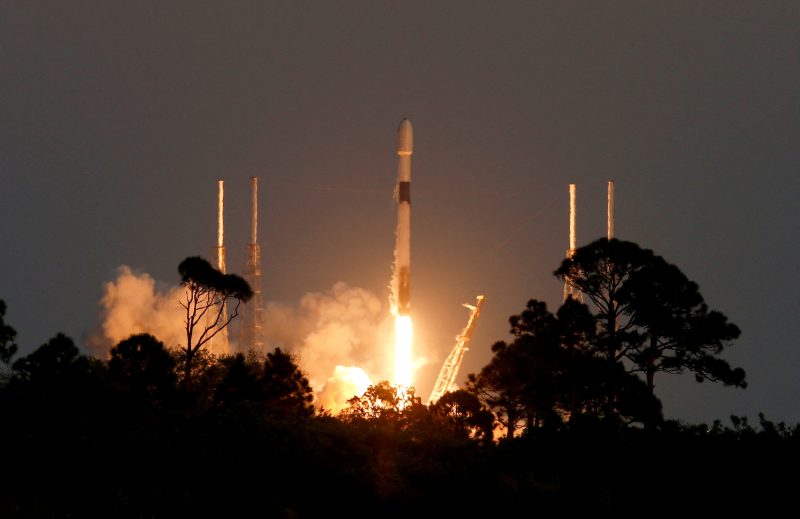Ukraine’s use of commercial satellites to help repel the Russian invasion has bolstered the U.S. Space Force’s interest in exploiting the capabilities of the private sector to develop new technologies for fighting a war in space.
But the possible reliance on private companies, and the revolution in technology that has made satellites smaller and more powerful, is forcing the Defense Department to wrestle with difficult questions about what to do if those privately owned satellites are targeted by an adversary.
White House and Pentagon officials have been trying to determine what the policy should be since a top Russian official said in October that Russia could target the growing fleet of commercial satellites if they are used to help Ukraine.
Konstantin Vorontsov, deputy director of the Russian Foreign Ministry’s department for nonproliferation and arms, called the growth of privately operated satellites “an extremely dangerous trend that goes beyond the harmless use of outer-space technologies and has become apparent during the latest developments in Ukraine.”
He warned that “quasi-civilian infrastructure may become a legitimate target for retaliation.”
In response, White House press secretary Karine Jean-Pierre reiterated earlier comments from her counterpart at the Pentagon that “any attack on U.S. infrastructure will be met with a response, as you’ve heard from my colleague, in a time and manner of our choosing.”
But what that response will be is unknown, as officials from a number of agencies try to lay out a policy framework on how to react if a commercial company is targeted.
In a recent interview, Gen. David Thompson, the Space Force’s vice chief of operations, said that while expanding the partnership with the commercial space industry is one of his top priorities, it has also led to a host of unanswered questions.
“The Ukraine conflict has brought it to the forefront,” he said. “First, commercial companies are thinking very clearly and carefully about, can we be involved? Should we be involved? What are the implications of being involved? … And on our side, it’s exactly the same thing. Should we depend on commercial services? Where can we depend on commercial services?”
The Pentagon has long relied on the private sector, he said. But the proliferation of small satellites has created a more resilient system that has provided real-time imagery of the Ukraine battlefield from space, allowing nations to track troop movements, assess damage and share intelligence. Communication systems, such as SpaceX’s Starlink constellation, have kept the internet up and running at a time when Ukraine’s infrastructure has been decimated.
The discussions come as the Pentagon is investing in more systems that were originally developed for civilian use but also have military applications. In the National Defense Strategy released late last year, the Pentagon vowed to “increase collaboration with the private sector in priority areas, especially with the commercial space industry, leveraging its technological advancements and entrepreneurial spirit to enable new capabilities.”
Several companies are developing small rockets that would launch inexpensively, and with little notice. SpaceX, meanwhile, has launched its Falcon 9 rocket at a record cadence, firing it off 61 times last year. The company is on track for even more launches this year.
“We think in a few years we’ll be in the 200, 300, 400 range,” Space Force Maj. Gen. Stephen Purdy Jr. said during a conference this month, referring to total space launches. “There’s a massive increase in commercial launch.”
He said the Space Force would like to get to the point where “we’re constantly launching, and there’s a schedule. There’s a launch in two hours, and there’s launch in 20 hours. Your satellite is not ready? Okay, get on the next one.”
For its next round of national security launch contracts, the Space Force has proposed an approach specifically designed to help small launch companies compete.
One track of contracts will be reserved for the most capable rockets — those able to hoist heavy payloads to every orbit the Pentagon wants to plant a satellite. Stalwarts such as SpaceX and the United Launch Alliance, the joint venture of Lockheed Martin and Boeing, would probably compete for those. Blue Origin, the venture owned by Jeff Bezos, could also potentially bid its New Glenn rocket, though it has yet to fly. (Bezos owns The Washington Post.)
But the Space Force has proposed offering a second track for smaller rockets, allowing start-ups to enter one of the most esteemed and lucrative space marketplaces that could be worth billions of dollars over the next several years. Those companies include Rocket Lab, which has recently christened its launch site on the Eastern Shore of Virginia, adding to its facility in New Zealand, and Relativity, which is scheduled to launch the world’s first 3D printed rocket on Wednesday.
There are also a host of space companies promising to build rockets that have never flown. “The challenge is not lowering the bar too low,” Peter Beck, Rocket Lab’s CEO, said in an interview. “We don’t think it’s useful to have paper rockets competing with real rockets. … There has to be a level of due diligence. There has to be a level of sanity.”
The new approach has “balanced that tension very well between let’s make sure we have what we need for national security access to space and, as best we can, help to foster and take advantage of growth in the commercial market,” Thompson said.
The Space Force is also looking to the private sector for what’s known as on-orbit servicing, refueling spacecraft and repairing damaged ones. At some point, Purdy said, he saw a future where there are propellant depots in space, tugs that can move damaged satellites, junkyards and manufacturing in space on commercial space stations.
In other words, ensuring space has the same war-fighting infrastructure and logistics that exist on the ground.
“In the other domains, we don’t build a ship or a tank or an aircraft and fuel it and then say, ‘Okay, you’re going to operate this for the next 15 or 20 years, and you need to plan all your operations based on the fact that you’re never going to refuel these ever again,’” Purdy said. “That’s hard to wrap your mind around, but that’s how we actually operate in space.”
Removing orbital debris, then, is to create freedom of movement in space, he said, the on-orbit equivalent of saying we “need a mine detection and clearing capability.”
Last year, the Space Force launched a program called Orbital Prime that would give companies seed money to develop the technology needed to clean up space. In the first round of the program, companies can win awards of $250,000, with as much as $1.5 million in a second round of funding. The program will culminate with a test demonstration in orbit.
“New technologies are opening up the market,” Thompson said. “And that’s driven a culture change. We’re trying to adapt to it, but it’s coming with challenges as any change would.”
One of those challenges are the new rules of the road — how best to use commercial technology in warfare, and how to respond when it is targeted. For now, there are more questions than answers.
“I will absolutely tell you with the National Space Council, with the National Security Council, with the office of Secretary of Defense and certainly inside the departments of the Air Force and Space Force, we have an intense discussion now,” Thompson said. “A lot of thinking and development and policy work has to be done.”



























